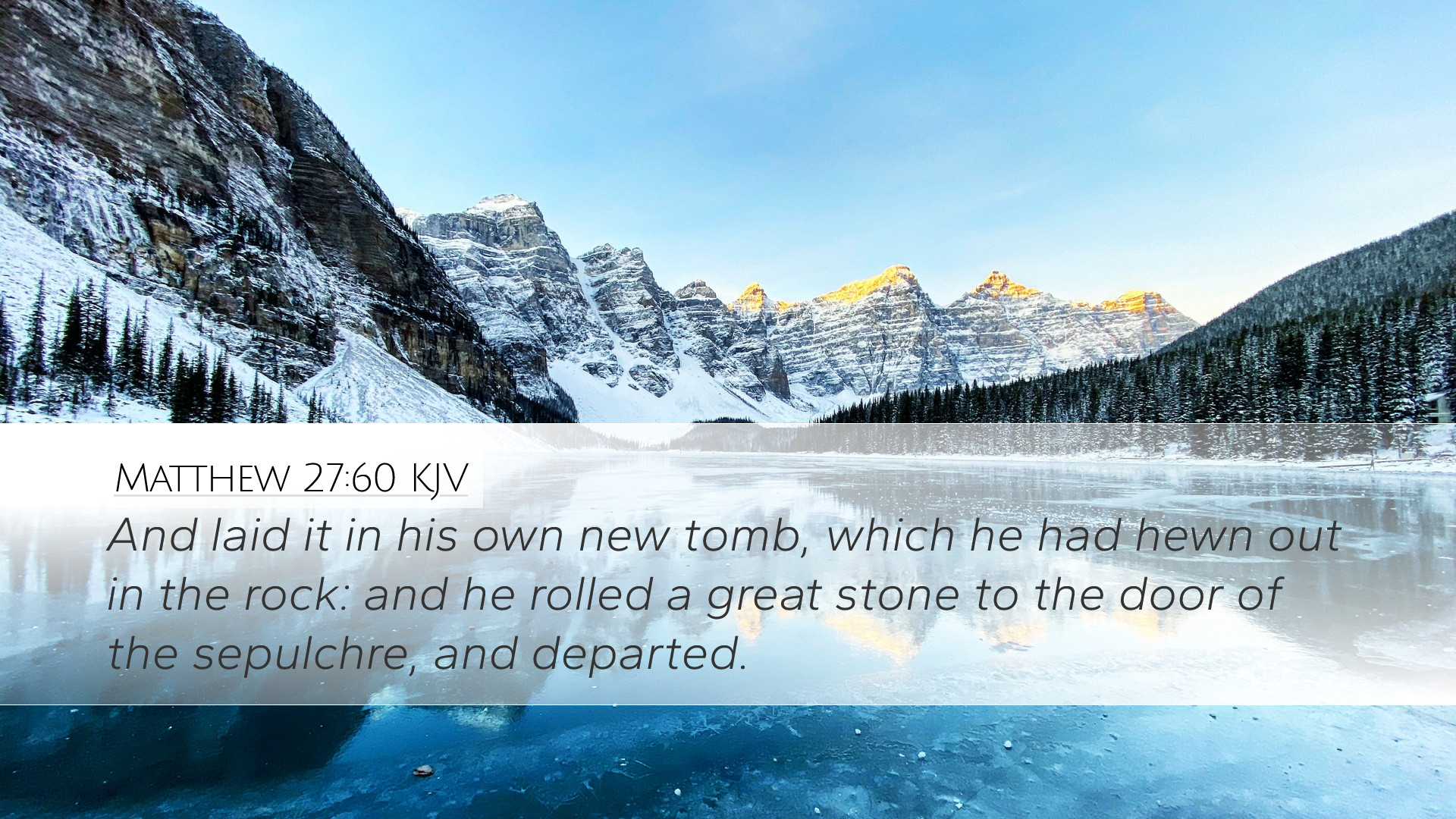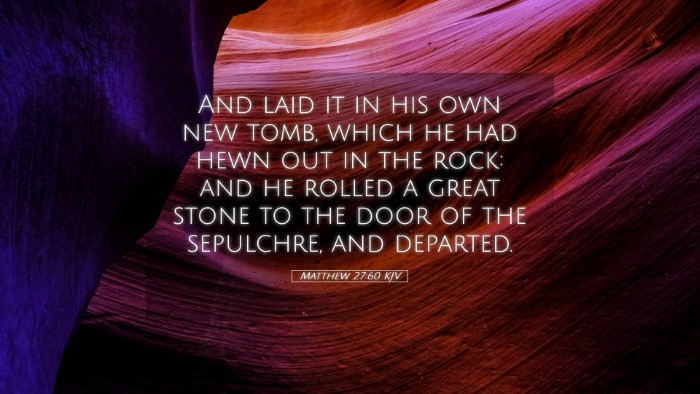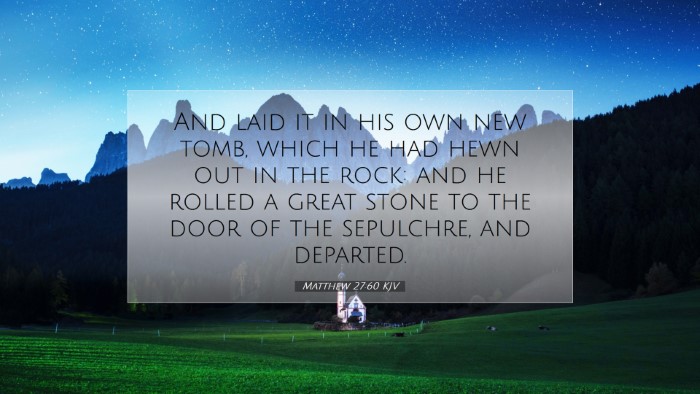Commentary on Matthew 27:60
Verse: "And laid it in his own new tomb, which he had hewn out in the rock: and he rolled a great stone to the door of the sepulchre, and departed."
Introduction
Matthew 27:60 captures a poignant moment in the narrative of Christ’s crucifixion and burial. The actions of Joseph of Arimathea present profound theological implications and symbolize critical truths about death, burial, and resurrection. As faithful leaders, students, and scholars engage with this text, exploring various commentaries will yield rich insights into its meaning.
Contextual Overview
This verse is set within the climactic events following Jesus’ crucifixion. Joseph of Arimathea, described as a wealthy disciple of Jesus, requested the body of Christ from Pilate, marking a shift from the public ministry of Christ to the private act of burial.
Insights from Public Domain Commentaries
Matthew Henry’s Commentary
Matthew Henry emphasizes the significance of Joseph’s actions as an expression of honor towards Jesus. Joseph’s decision to lay Jesus in his own tomb underscores the fulfillment of prophecy regarding the Messiah’s burial. Henry notes:
- New Tomb: The use of a new sepulchre indicates that Christ was buried in a manner that signifies purity and distinction, contrasting with the traditions surrounding burial in common graves.
- Hewn out in the Rock: This detail signifies permanence and strength, which suggests that Jesus, though dead, had a secure resting place. Henry correlates this with the rock-solid nature of Christ’s teachings and foundation.
- Rolling the Great Stone: This act serves as a literal and symbolic barrier between death and life, foreshadowing the resurrection. It hints at the power of God to conquer death, as the stone would later be rolled away.
Albert Barnes’ Notes on the Bible
Barnes elaborates on the identity of Joseph of Arimathea and the implications of his actions. He remarks:
- Joseph’s Discipleship: Joseph is described not only as wealthy but also as a secret disciple, highlighting the risk he took in openly acknowledging his affiliation with Jesus during a time of persecution.
- Respect for the Body of Christ: Barnes underscores the respect shown in the burial process. In ancient cultures, including Judaism, the proper burial of the dead was a deeply held value. Joseph’s actions reflect a profound respect for Jesus’s body.
- Symbol of Hope: The new tomb, constructed in the rock, serves as a destination of awaiting resurrection, illustrating the hope embedded in the Christian narrative.
Adam Clarke’s Commentary
Adam Clarke offers a detailed analysis of the cultural and religious implications surrounding the burial of Jesus:
- Prophetic Fulfillment: Clarke points out that the manner and place of Jesus’s burial fulfill Isaiah 53:9, which speaks of the Messiah being with the rich in His death.
- Significance of the Stone: He explores the large stone rolled to the sepulchre, indicating a finality in death, but also anticipates the miraculous event of the resurrection, which would render the stone powerless.
- Public vs. Private Discipleship: Clarke contrasts Joseph’s private faith with the public rejection of Jesus by the majority, highlighting the theme of true discipleship often manifesting in quiet, courageous acts.
Theological Reflections
The burial of Christ is as significant as His crucifixion. This event highlights several theological themes vital for pastors and scholars alike:
- Death’s Reality: Jesus’s burial emphasizes the reality of death, crucial for understanding sin’s consequence
- Hope of Resurrection: The new tomb signifies the anticipation of the resurrection, embodied in the Gospel’s message.
- Community and Discipleship: The role of Joseph illustrates the importance of community in the ministry of Christ, encouraging believers to visibly support the mission of the Church.
Conclusion
Matthew 27:60 invites deep theological consideration and reflection on the nature of discipleship, the importance of burial traditions, and the anticipation of resurrection. By drawing insights from established commentaries, we enrich our understanding of this pivotal moment in the Passion narrative. For pastors, theologians, and students, engaging with this text not only deepens faith but also nurtures a robust Christian witness in the world.


